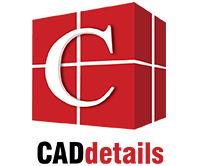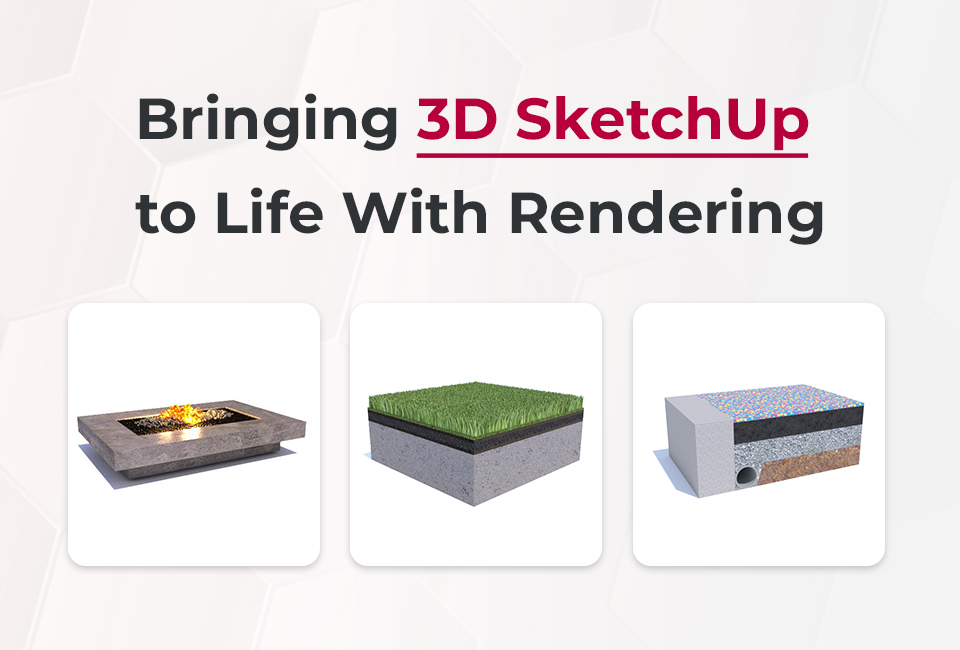SketchUp is a 3D modeling software widely used for architectural design, interior design, and landscape architecture. The widespread use of SketchUp by the design community makes it worthy of the attention of building product manufacturers. According to Trimble, SketchUp boasts over 40 million professional and hobbyists. SketchUp's reach is largely due to its user-friendly approach to 3D modeling. The software is intuitive and provides a user-friendly interface, making the creation of 3D models accessible to professionals and beginners. SketchUp offers a free version, as well as a paid version, SketchUp Pro.
How Does SketchUp Differ from BIM?
SketchUp and Building Information Modeling (BIM) are both tools used in the field of architecture and construction, but they serve different purposes and have distinct characteristics. Here are some key differences between SketchUp and BIM:
-
Modeling: SketchUp is a 3D modeling tool that focuses on creating visual representations of objects and spaces. BIM is a comprehensive approach that involves creating a digital representation of a building or infrastructure throughout its entire lifecycle. BIM encompasses the visual aspects and data about the physical and functional characteristics of the building components. This data can include material properties, cost information, construction schedules, and more.
-
Collaboration: SketchUp is often used for conceptual design and visualization. Additional tools can help make SketchUp effective for collaboration and coordination in a team setting. BIM emphasizes collaboration and coordination among different stakeholders in a construction project. BIM models can be shared and accessed by architects, engineers, contractors, and other professionals involved in the project.
-
Project Lifecycle: SketchUp is focused on the early stages of design and visualization. BIM is designed to support the entire lifecycle of a building.
SketchUp is a 3D modeling tool with a focus on visualization and design, while BIM is a more holistic approach that involves creating intelligent 3D models with comprehensive data for the entire lifecycle of a building or infrastructure project. These tools complement each other, and many professionals use both tools, integrating SketchUp for early design phases and BIM for detailed design, construction, and facility management.
Ideal Product Types
When considering SketchUp for manufacturer’s building products, it is with nothing that not all products lend themselves well to SketchUp development. Complex and detailed products are not ideal as SketchUp files. The product complexity increases the file size and processing time and this hinders designers from incorporating the model into their SketchUp projects. Simpler shapes and details lend themselves well to SketchUp. Section models work well, as do products such as site furnishings, openings, fireplaces, and bollards.
SketchUp Rendering
Three-dimensional models let design professionals show off design projects and communicate design concepts. Rendering a SketchUp model elevates the visual appeal of the model and can help the design team present a design concept in a realistic setting. Rendering gives an object texture and depth, increasing its usability in projects and the ability of the model to accurately communicate design elements. Rendered model previews use advanced rendering engines that simulate realistic lighting, materials, and textures. This allows for a more accurate representation of how the final design will look in real life. Rendering can even alleviate the need to see what a product looks like in person.
How Can a Building Product Manufacturer Bring Products to Life with SketchUp?
CADdetails offers building product manufacturers access to in-house SketchUp development. Rendering is available to enhance the visualization of building products and provide a realistic showcase for your CADdetails profile. The enhanced visualization improves understanding of the product and enhances product marketability. Building product manufacturers partnered with CADdetails gain access to our audience of over 680,000 design professionals looking for products to specify. As part of a CADdetails participation package, SketchUp development includes a SketchUp model that conforms to product specifications, a preview image, as well as an orbit file that allows users to interact with the product before downloading. Further innovations are underway through CADdetails to improve our SketchUp orbit tool with added features such as an upgraded rending engine and automatic panning.
Contact CADdetails today to learn more about SketchUp for your building products!
Cover image by CADdetails.com


-1.png)